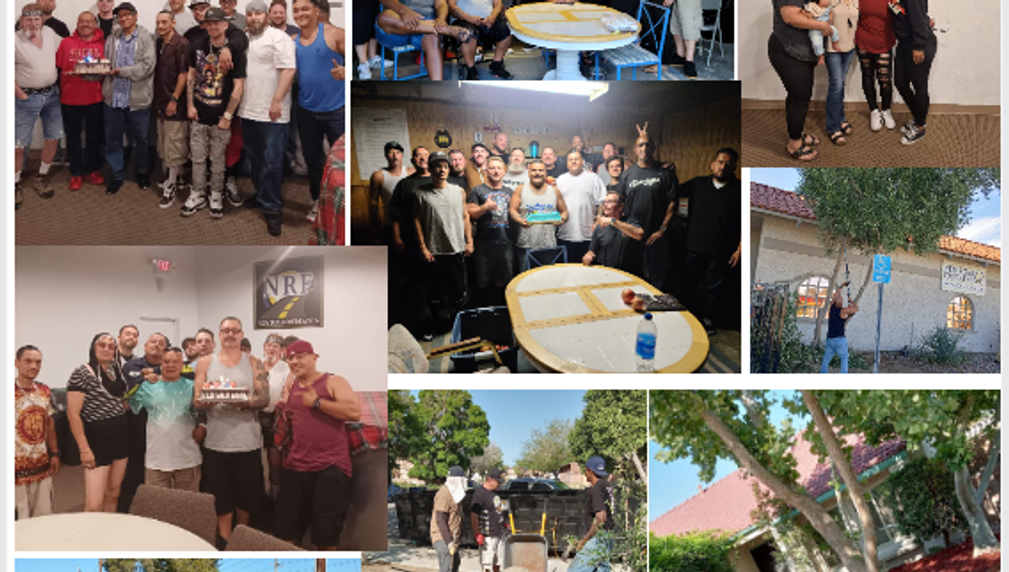NRF SUD Recovery to Housing
This funding will be used to support people who are substance addicted move from homelessness to housing through comprehensive services and supports including evidence based treatment programs, employment preparation, case management/navigation, and family engagement/services.

What is the primary issue area that your application will impact?
Affordable housing and homelessness
In what stage of innovation is this project, program, or initiative?
Pilot or new project, program, or initiative (testing or implementing a new idea)
What is your understanding of the issue that you are seeking to address?
According to the LA Times there are 75,518 unhoused people in LA County, the second highest number of unhoused in the United States. There is undisputable evidence of the connections between substance use/abuse and homelessness. According to SAMHSA, people who are homeless suffer from substance abuse and addiction at a greater rate than those who are housed with an estimated 38% of people who are homeless suffering from an alcohol dependency while 26% abuse drugs. By providing the intensive treatment, resources, employment, and support people need to find lasting sobriety, NRF addresses a root cause of homelessness.
Describe the project, program, or initiative this grant will support to address the issue.
This initiative will allow NRF to permanently reduce the risks of homelessness and relapse by providing up to 1 year of sober living housing and assuring that all clients have a safe place to live upon exiting the program. NRF operates 4 sober living homes located in Lancaster/Palmdale and serves up to 75 residents a year from throughout the Antelope Valley and LA County. Coming out of jail/prison, homelessness, broken families, etc. many clients carry a deep shame that can drive them to stay lost in their addiction. NRF understands these struggles and provides programing that incorporates evidence-based practices with the practicalities of employment, healthy living, family reconciliation, and housing through a caring community of support without judgement. Without stable housing upon program completion, NRF clients are at high risk of returning to homelessness and relapse. Under this proposal, NRF will strengthen it’s ability to assure that people who finish the program move into stable housing by assisting clients with a housing plan, finding adequate housing, credit repair, deposits, eviction/legal issues, and resources for ongoing support. NRF’s Navigator will maintain a network of housing, mental health, employment services, medical and other community organizations partners to assist residents with the wide array of issues and barriers to housing/recovery.
Describe how Los Angeles County will be different if your work is successful.
NRF empowers clients to regain control over their lives and decisions. NRF moves people who are substance addicted into employment and housing by addressing underlying causes and conditions through a sober living/therapeutic environment that provides evidence-based treatment; employment preparation and skill development; case management; housing placement/support; direct job skills/experience through NRF’s social enterprise, and other needed services. As clients heal they find their place in the community, making LA a healthier and safer place to live—no longer living on the street, employed in life sustaining jobs, and encouraging others who are lost in addiction to seek treatment.
What evidence do you have that this project, program, or initiative is or will be successful, and how will you define and measure success?
NRF has developed goals and objectives as well as tracking systems for all aspects of its programs. The following are specifically related to ending homelessness for NRF clients who complete at least 6 months of SUD related programing in the sober living homes.
Obj. 1: 100% of clients that were homeless when entering the program will be paired with the Housing Navigator.
Obj. 2: 100% of clients in need of housing assistance will complete a housing assessment
Obj. 3: 80% of clients who successfully complete the program will complete a housing assessment will have a housing plan prior to exiting sober living. Obj. 4: 50% of clients placed in housing will still be housed at 6-month follow-up.
Approximately how many people will be impacted by this project, program, or initiative?
Direct Impact: 50.0
Indirect Impact: 30.0